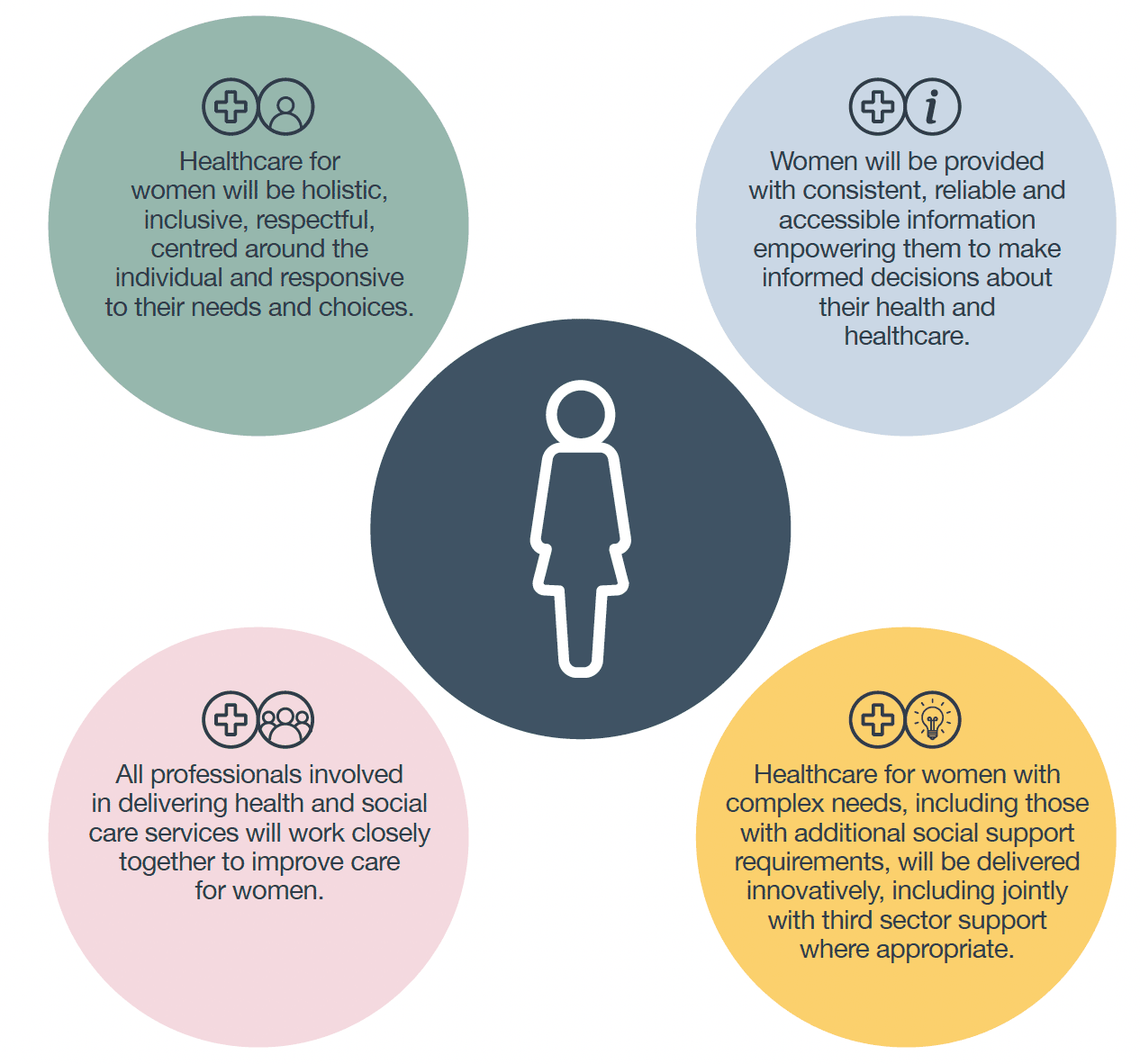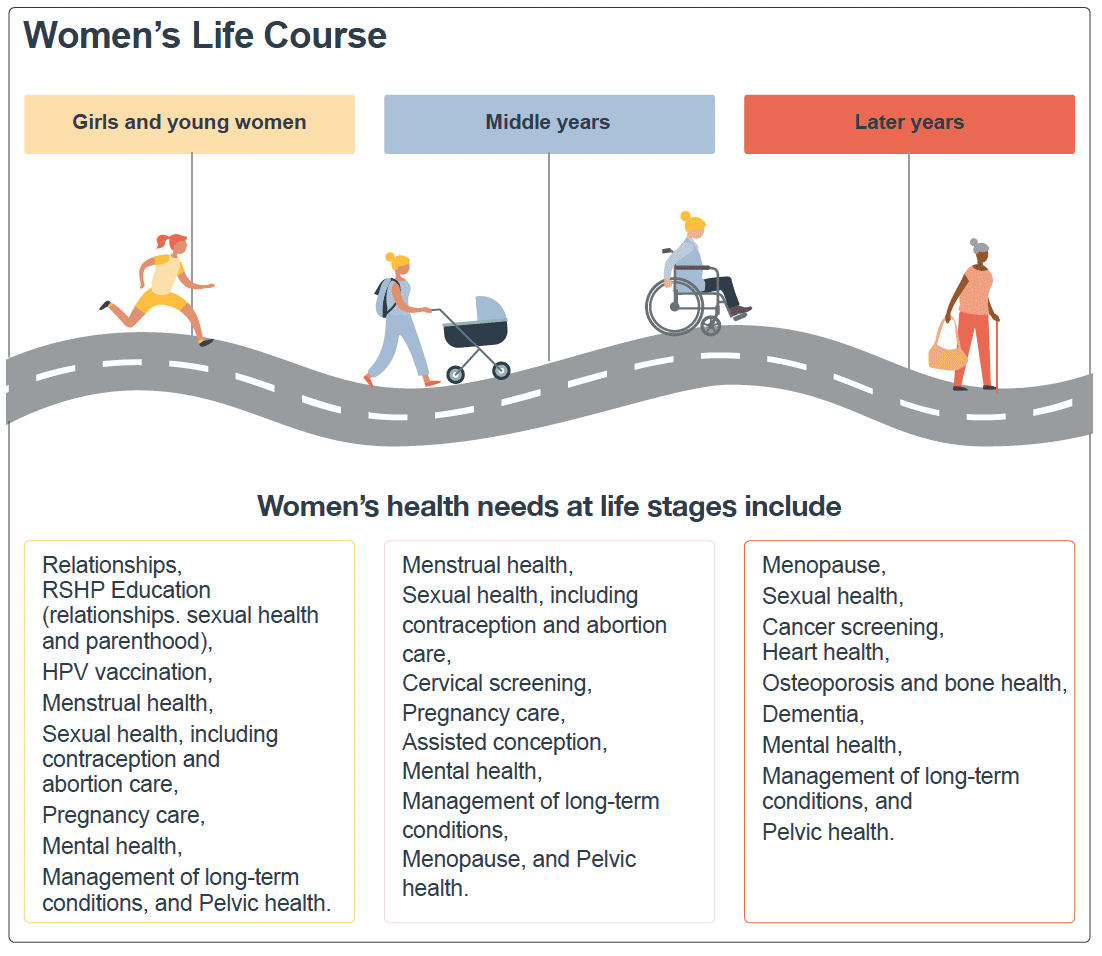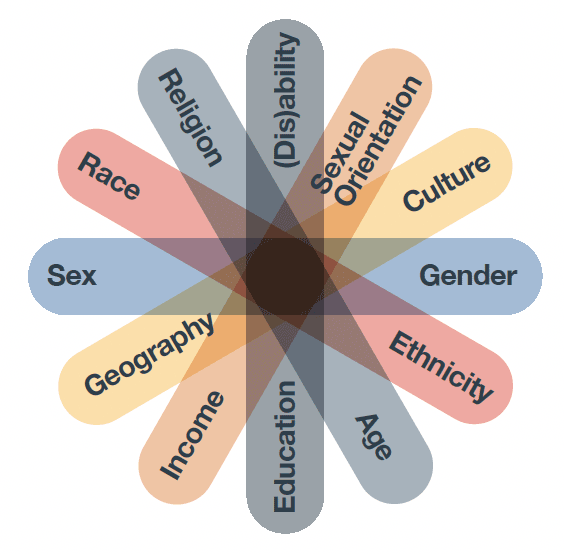Women's health plan: progress report
The Women's Health Plan aims to improve health outcomes and health services for all women and girls in Scotland. This first report sets out the progress made to date against the Plan's short term actions, and an update on medium term actions where progress is already being made.
Introduction
Ambition: A Scotland where health outcomes are equitable across the population so that all women and girls enjoy the best possible health throughout their lives.

Graphic text below:
- Healthcare for women will be holistic, inclusive, respectful, centred around the individual and responsive to their needs and choices.
- Women will be provided with consistent, reliable and accessible information empowering them to make informed decisions about their health and healthcare.
- All professionals involved in delivering health and social care services will work closely together to improve care for women.
- Healthcare for women with complex needs, including those with additional social support requirements, will be delivered innovatively, including jointly with third sector support where appropriate.
The Women's Health Plan aims to improve health outcomes and health services for all women and girls in Scotland. It sets out how the Scottish Government intends to reduce inequalities in health outcomes affecting women over a three year period from 2021 – 2024, and beyond. Its sixty-six actions focus on six priority areas and work toward the Scottish Government's ambition that all women enjoy the best possible health, throughout their lives. The six priority areas are menopause, menstrual health, endometriosis, abortion and contraception, post natal contraception and heart health.

Graphic text below:
Girls and young women • Middle years • Later years
Women’s health needs at life stages include:
- Relationships, RSHP Education (relationships. sexual health and parenthood), HPV vaccination, Menstrual health, Sexual health, including contraception and abortion care, Pregnancy care, Mental health, Management of long-term conditions, and Pelvic health.
- Menstrual health, Sexual health, including contraception and abortion care, Cervical screening, Pregnancy care, Assisted conception, Mental health, Management of long-term conditions, Menopause, and Pelvic health.
- Menopause, Sexual health, Cancer screening, Heart health, Osteoporosis and bone health, Dementia, Mental health, Management of long-term conditions, and Pelvic health.
The Plan, informed by women, focuses on creating the conditions that can change culture, support women's health and tackle the inequalities that have affected women's health for generations.
Different stages in a woman's life present both health opportunities and challenges. Many aspects will be present in more than one life stage. That is why the Women's Health Plan takes a life-course approach so that the health needs of women are responded to holistically, and opportunities to promote and protect health and wellbeing are taken, throughout all stages of life.
We know that multiple social, structural and individual factors lead to health inequalities and that every individual has different needs and experiences.
The Women's Health Plan takes an intersectional approach which recognises that many women and girls in Scotland will face multiple (and often overlapping) barriers to accessing good healthcare.
Intersectionality acknowledges that there are many different factors that make up people's identities, for example their sex, gender, ethnicity, sexual orientation, socio-economic background, disability, religion and more.

Graphic text below:
- Religion
- Race
- Sex
- Gender
- Ethnicity
- Age
- Geography
- Culture
- Income
- Sexual Orientation
- Education
- (Dis)ability
The Plan references women/woman throughout, but it is important to highlight – as it is in the Plan – that it is not only those that identify as women who require access to women's health and reproductive services. Some transgender men, non-binary people and intersex people or people with variations in sex characteristics may also experience menstrual cycles, pregnancy and the menopause. The actions in the Plan make clear that all healthcare services should be respectful and responsive to the needs of the individual.
The actions in the Plan are divided into short-term (one year), medium-term (one-to-three years) and long-term (three years or more) timescales. The delivery of the Plan is overseen by the Women's Health Plan Implementation Programme Board, chaired by Professor Marion Bain, Deputy Chief Medical Officer.
This first report sets out progress against the Plan's short-term actions, all of which were commenced in the first year of the Plan. For some areas, it also provides an update on medium-term actions where progress is already being made, ahead of schedule.
The specific aims and actions in the Women's Health Plan are not the only areas where women's health is being progressed in Scotland. Policies across the Scottish Government are making a difference to women's health, including pregnancy and maternity, screening and mental health.
Contact
Email: womenshealthplan@gov.scot
There is a problem
Thanks for your feedback